
The cramped rows of the flea market at the Udelnaya metro station in St. Petersburg are overcrowded on Sunday. Between strolling idlers and curious tourists, people who definitely know what they’re hunting here prowl: usually, they are interior designers, secondhand dealers or “professional” collectors. Some don’t shy away from haggling with the sellers and try to half the price – for a “wholesale purchase”.
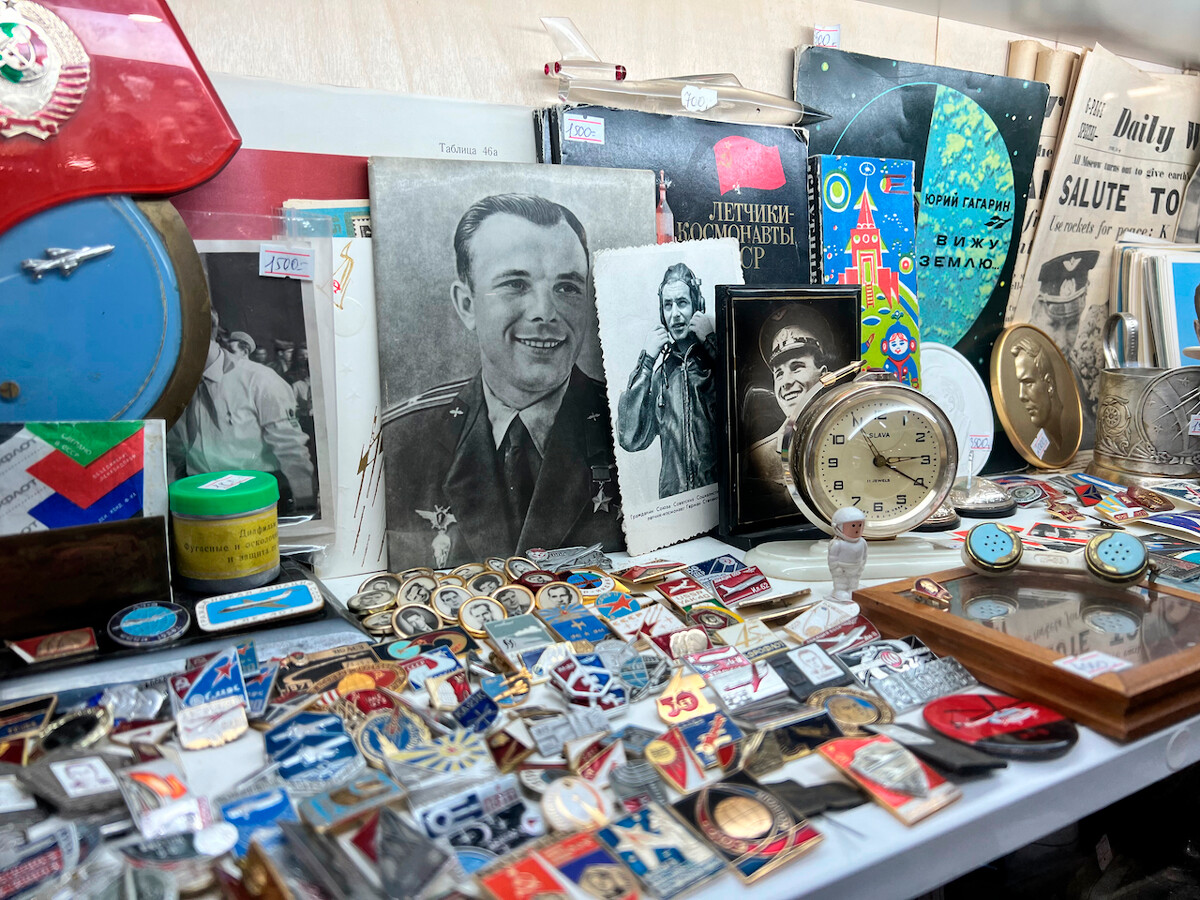
There are also those who bring their own goods to sell. Right before my eyes, a young man took out a lopsided cuckoo clock out of his backpack. I could only catch a glimpse of the year of manufacture on the face – 189… The bored shopkeeper perked up and they began discussing the price of this antique junk.
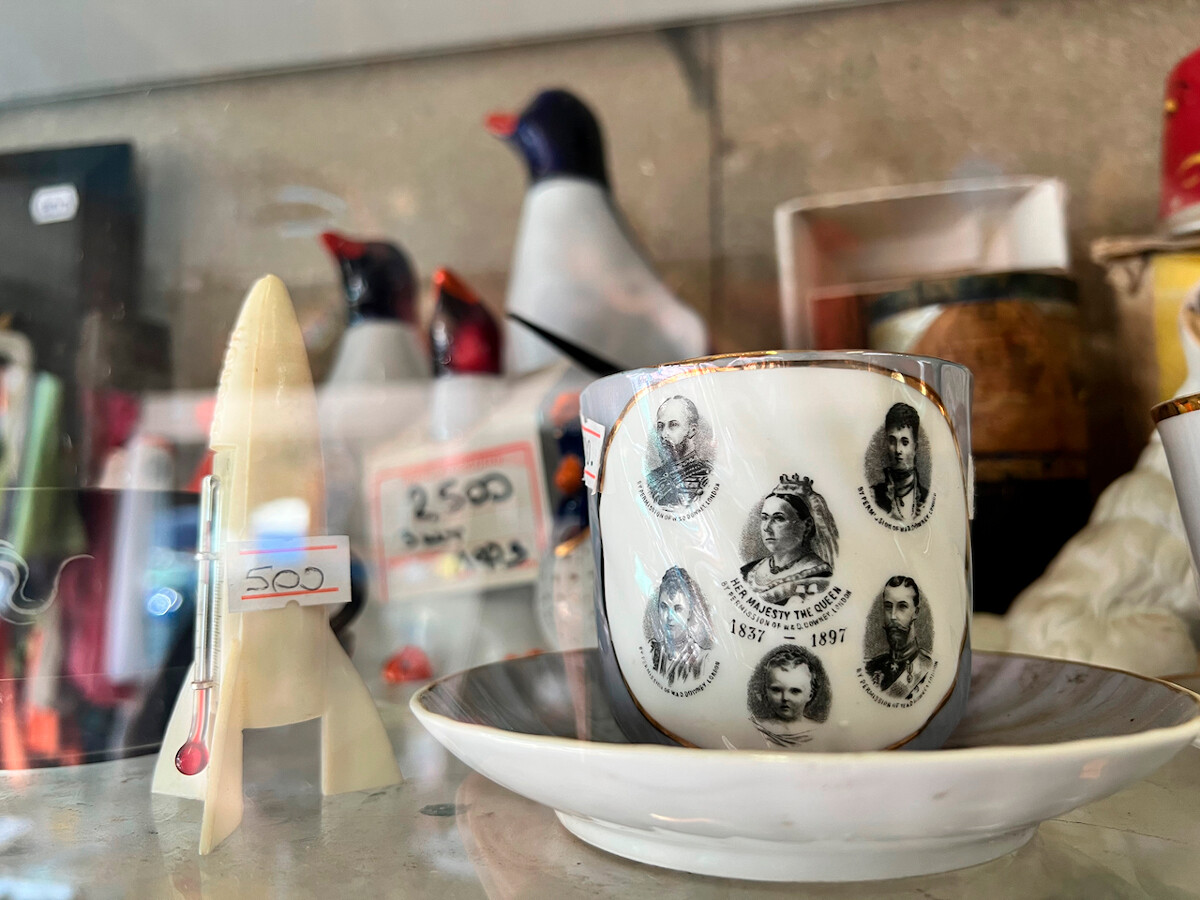
In 2012, the Russian version of ‘Forbes’ magazine honored this St. Petersburg flea market with second place in its rating of the best flea markets of the world. In 2016, British newspaper ‘The Guardian’ included it in its list of the best “Soviet” attractions in St. Petersburg. At first glance, it seems that ‘Udelka’ (the Udelnaya flea market) really is a time machine; only, it transports you not into Soviet times, but into the realities of a post-Soviet market at the beginning of the 1990s. Junk shops stand adjacent to the ruins of assorted antiques, sprawling right on the ground where the sellers do their business.
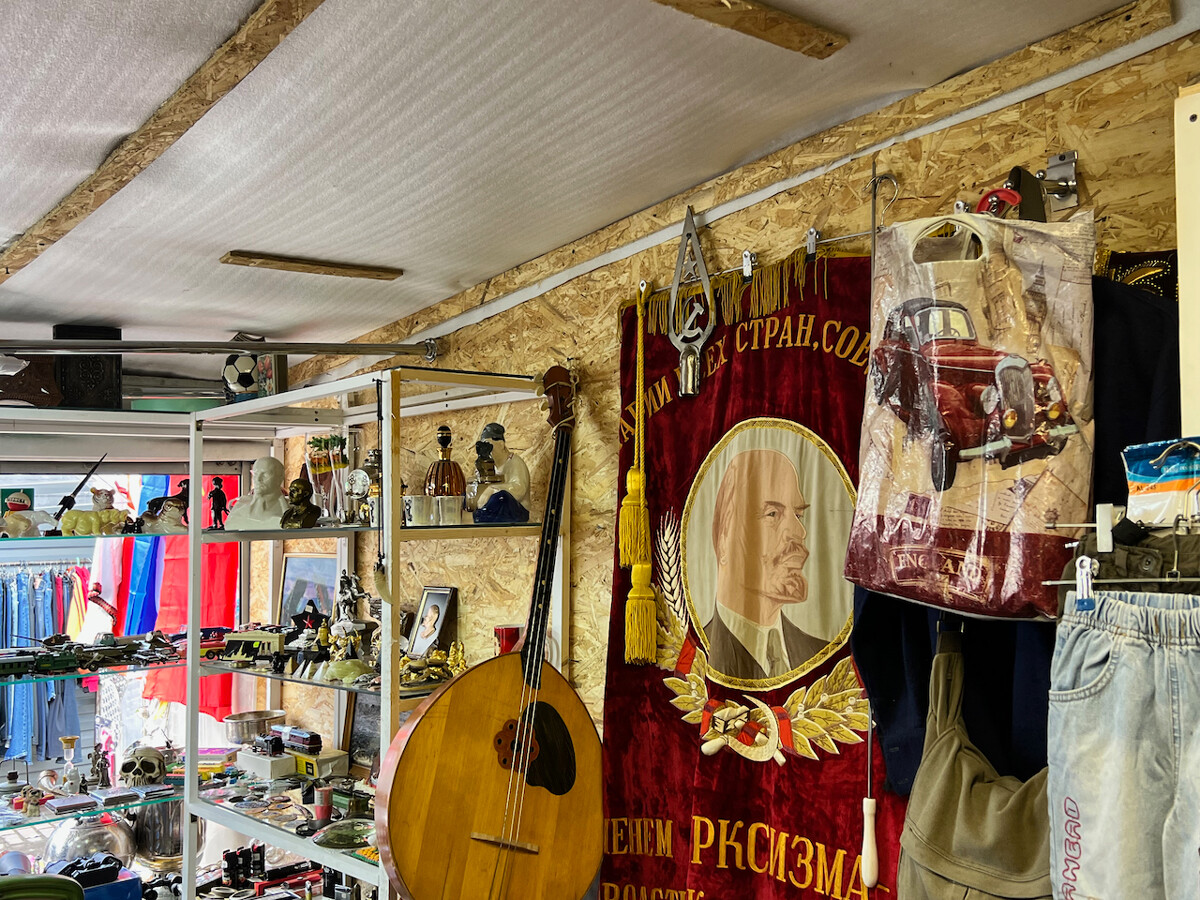
Are people doing renovations in their apartments and are throwing grandma’s Soviet chinaware and books in the trash? Were old, half-rotten USSR maps found behind a closet in a school’s geography class? Did ‘Black diggers’ (tomb raiders) find World War II era German helmets in the swamps of Leningrad Region? Did a stack of the Leningradskaya Pravda newspaper from 1986 get discovered in some dacha’s attic? Did someone’s granddad, a war veteran, leave a trophy watch and binoculars to his descendants? It seems like all of it, sooner or later, ends up at ‘Udelka’.
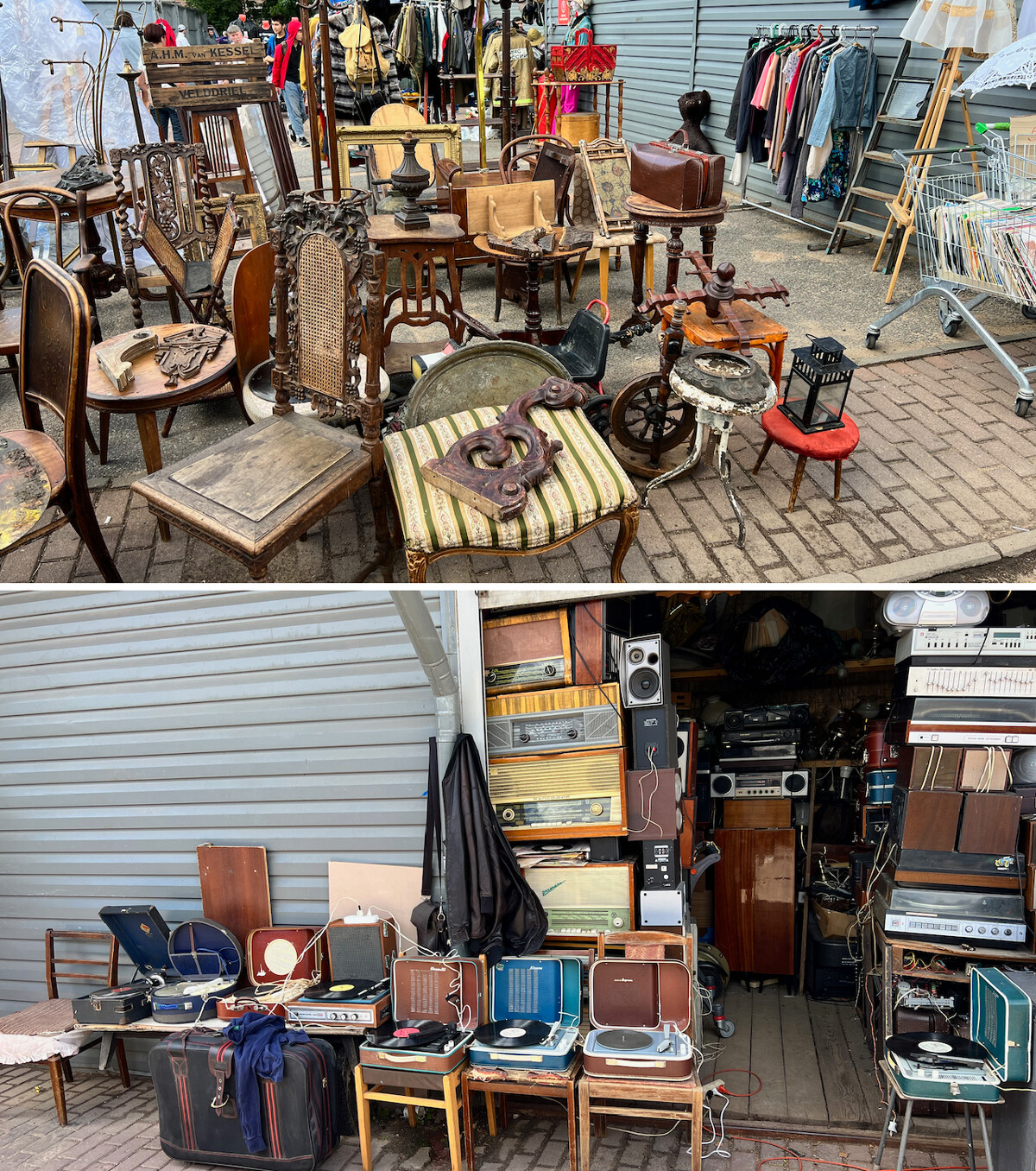
While wandering past stalls with old kitchenware that have seen three or four generations of Soviet families, a nagging feeling rolls over. Especially when you spot something iconic: a chipped porcelain cup, like the one you drank tea from two times a year at most, on Victory Day and New Year’s. After all, grandma only brought it out for the most important occasions.
As it turned out, there are a lot of nostalgic buyers.
“Tell me, how much is that statuette over there? I had two of those once, but my granddaughter broke one when she was little. Now she’s already 25, lives in Germany and has become quite the business woman. But back then, when she was five, I was so annoyed I gave her a hiding – these statuettes were rare. My late husband got them through his acquaintances, as they were impossible to buy back then,” a talkative old woman sighs to either me or the seller and explains why this porcelain statuette is so precious to her. Once, these were in the sideboards of every Soviet housewife and now, it is a fashionable vintage item that costs quite a bit – starting from the equivalent of $100!
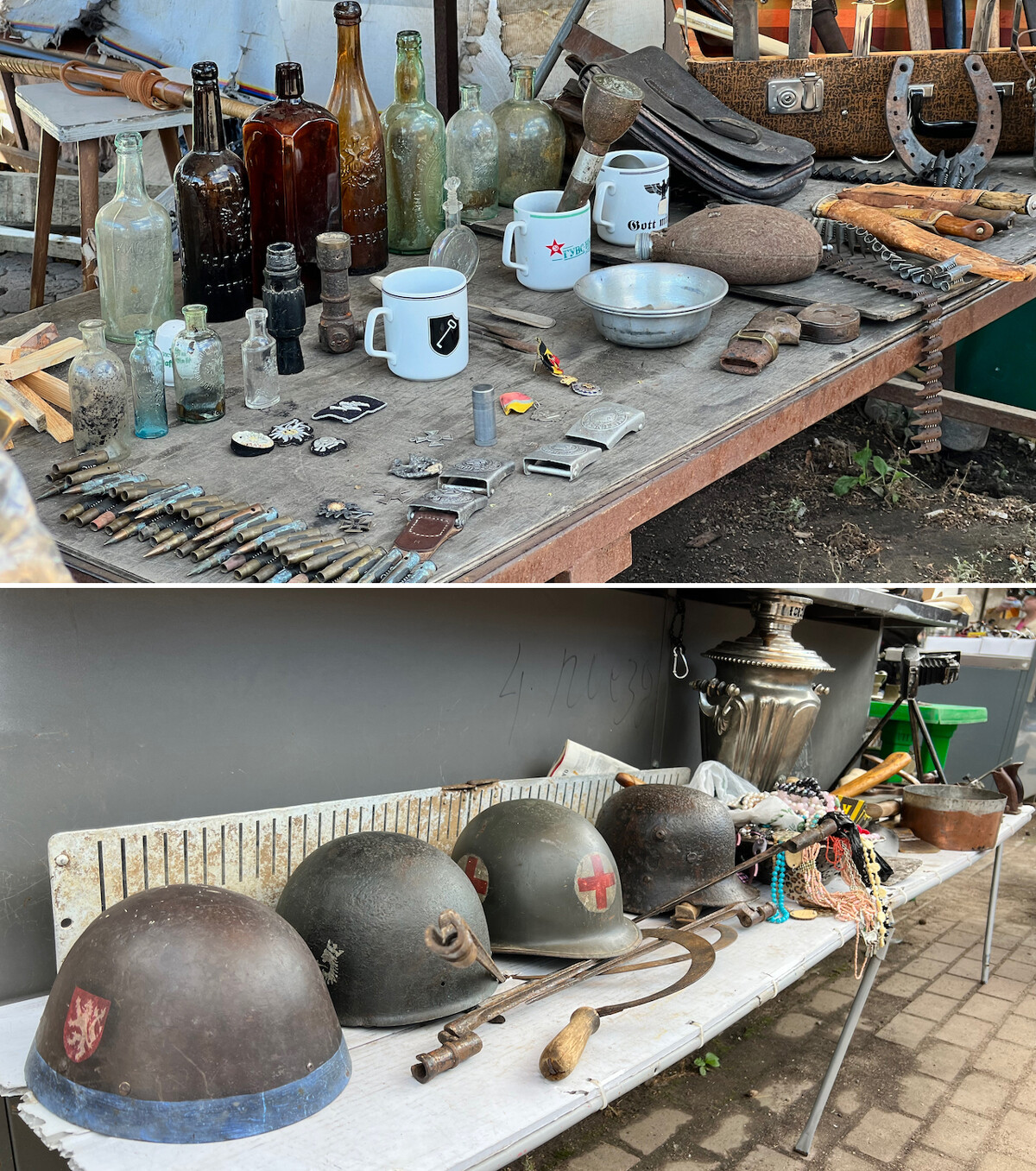
The principles of pricing at the Udelnaya flea market are a separate mystery. You would think that Soviet badges, coins and banknotes — the pride of collectors – should cost a tidy sum, but they’re sold for next to nothing. Shiny pieces of metal with Lenin’s profile or the Olympic rings can be found at every third stall.
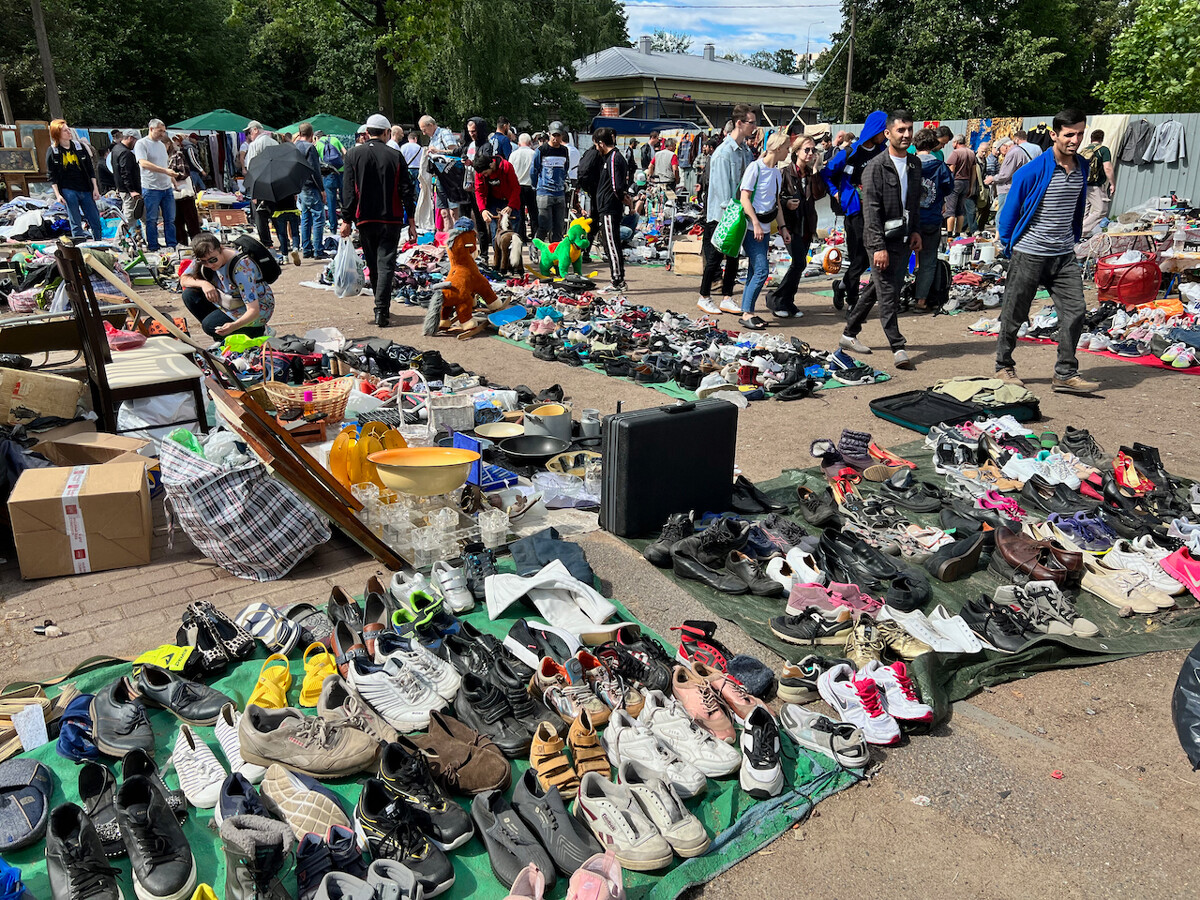
Even more interesting things can be bought for less than 1,000 rubles (approx. $17). Out of curiosity, I asked a seller how much his French opera glasses, clad in genuine leather, were. They looked to be more than 100 years old. Just $15? For such a price, it’s a bargain! It’s also a good reason to go see a historical play at the Mariinsky Theater.

The deeper you dive into the belly of the market, the more trashy are the terms of trade. In the farthest corner of ‘Udelka’, the sellers don’t even bother with stalls and lay goods right on the ground. Here, the assortment is “for amateurs”: it feels like all those creepy plastic dolls, relic suitcases, rusty samovars and faded Lenin portraits were gathered from garbage dumps. Worn and dirty carpets hang on the fence behind the sellers. I wonder, how long have they been waiting for their buyer?

Unexpectedly, the “ground” part of the market turns into a respectable shopping street. It is a real antiques paradise: pavilions are spacious and tastefully furnished, interesting paintings hang on the walls, stalls are covered in velvet, lead glass and silver for sale are polished. There are also much fewer people: the prices here are in a different league.
“This is a carriage mirror. France, 18th century,” a seller declares, noticing my interest in the elegant trinket. “It costs $1,200.”
The Udelnaya flea market, probably, does not have anything similar to this mirror.
“How did you get it?”
“Well, my suppliers brought it! I’ve been in this business for a while, I have an antiques store in the city center. I’m here only on Sundays, mostly just for fun.”
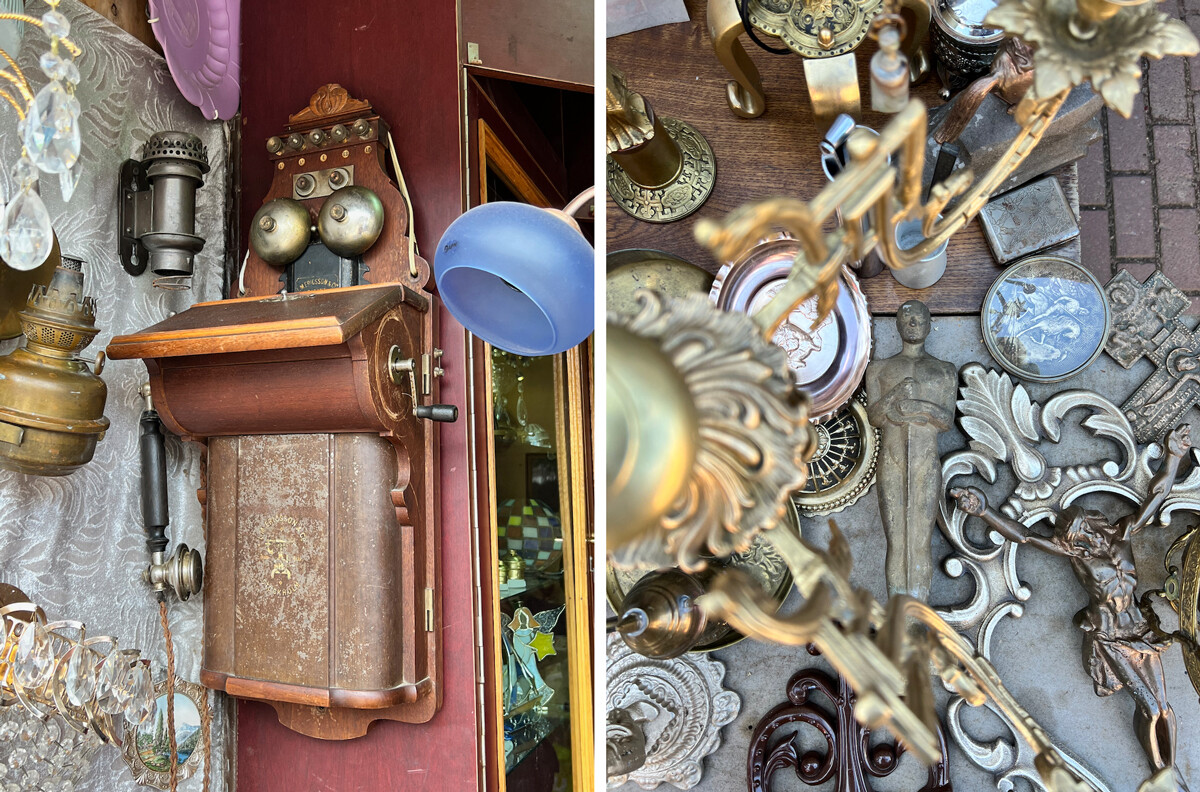
There are no other customers in the antiques store besides me. Now it’s clear, though, why the seller doesn’t mind it at all. Instead, he has some time to tell me stories about his most curious “exhibits”.
“See the artwork hanging upstairs? These are drafts from the Academy of Arts. The students practiced. Perhaps Repin himself: painfully well written!” The seller continues importantly.
“Before COVID, you probably had a lot of foreign customers?”
“Indeed! Once, I hosted an entire Chinese diplomat delegation, they were buying a Chinese vase from me. It was this tall, more than a meter in height! They said it was a gift. They have none like these back at home anymore: they were all already sold overseas.”
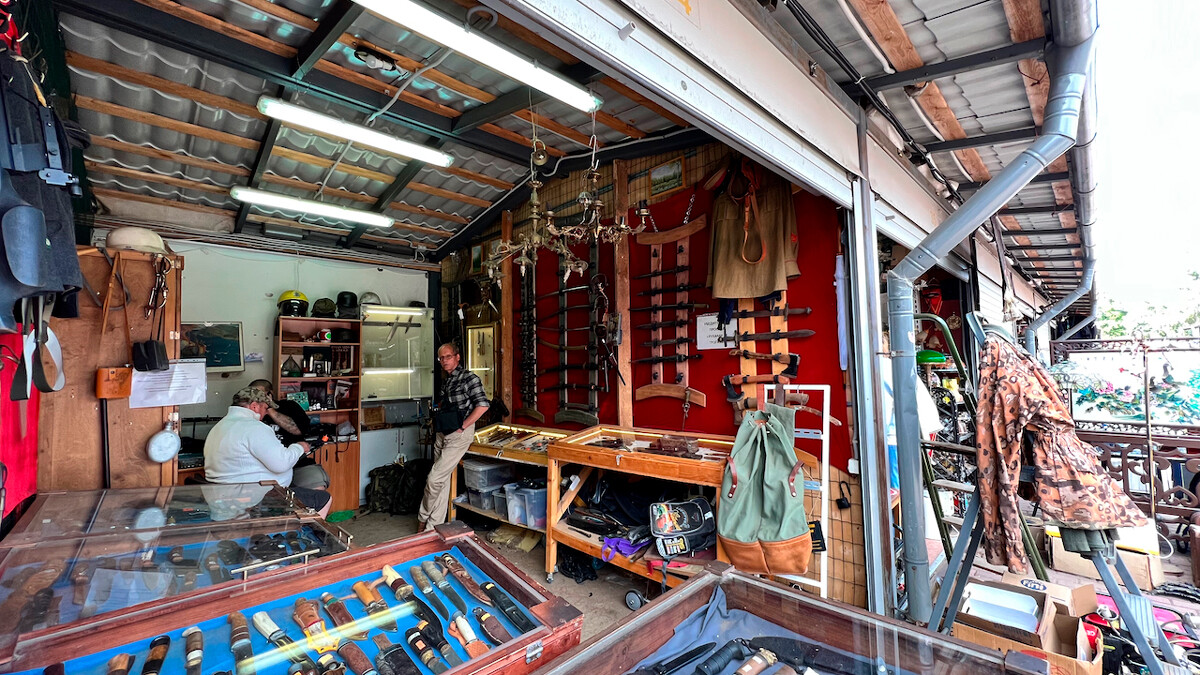
In the neighboring pavilions, the assortment is no longer so unique: mainly chinaware (I spotted ‘Villeroy & Boch’ plates), hardware, busts of the ubiquitous Lenin… Suddenly, in this row of stalls, showcases of hunting knives appear. “Do not touch!” A sign at the entrance warns. Inside, bored sellers are discussing sports news. A couple of young, flustered Chinese girls stand on the threshold; they hesitate to enter, but, impressed, point at the different blades and take photos on their smartphones.

But then, the girls turn around and lose all interest in the hunting gear – before them is a store with Oriental dolls. The Chinese girls rush there, instead.
As before, the concentration of foreign goods at Udelka today is, perhaps, higher than in any Russian store. It means that, no matter where you spent your childhood, you’ll find something that’ll make you nostalgic at this legendary St. Petersburg flea market.
Dear readers,
Our website and social media accounts are under threat of being restricted or banned, due to the current circumstances. So, to keep up with our latest content, simply do the following:
If using any of Russia Beyond's content, partly or in full, always provide an active hyperlink to the original material.
Subscribe
to our newsletter!
Get the week's best stories straight to your inbox